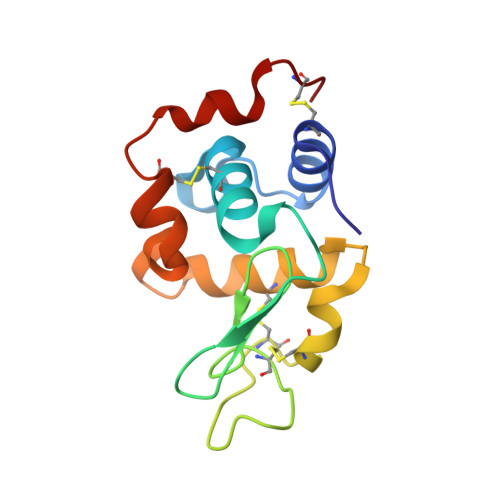A user-friendly plug-and-play cyclic olefin copolymer-based microfluidic chip for room-temperature, fixed-target serial crystallography.
Liu, Z., Gu, K.K., Shelby, M.L., Gilbile, D., Lyubimov, A.Y., Russi, S., Cohen, A.E., Narayanasamy, S.R., Botha, S., Kupitz, C., Sierra, R.G., Poitevin, F., Gilardi, A., Lisova, S., Coleman, M.A., Frank, M., Kuhl, T.L.(2023) Acta Crystallogr D Struct Biol 79: 944-952
- PubMed: 37747292
- DOI: https://doi.org/10.1107/S2059798323007027
- Primary Citation of Related Structures:
8FZW, 8SCY, 8SIL - PubMed Abstract:
Over the past two decades, serial X-ray crystallography has enabled the structure determination of a wide range of proteins. With the advent of X-ray free-electron lasers (XFELs), ever-smaller crystals have yielded high-resolution diffraction and structure determination. A crucial need to continue advancement is the efficient delivery of fragile and micrometre-sized crystals to the X-ray beam intersection. This paper presents an improved design of an all-polymer microfluidic `chip' for room-temperature fixed-target serial crystallography that can be tailored to broadly meet the needs of users at either synchrotron or XFEL light sources. The chips are designed to be customized around different types of crystals and offer users a friendly, quick, convenient, ultra-low-cost and robust sample-delivery platform. Compared with the previous iteration of the chip [Gilbile et al. (2021), Lab Chip, 21, 4831-4845], the new design eliminates cleanroom fabrication. It has a larger imaging area to volume, while maintaining crystal hydration stability for both in situ crystallization or direct crystal slurry loading. Crystals of two model proteins, lysozyme and thaumatin, were used to validate the effectiveness of the design at both synchrotron (lysozyme and thaumatin) and XFEL (lysozyme only) facilities, yielding complete data sets with resolutions of 1.42, 1.48 and 1.70 Å, respectively. Overall, the improved chip design, ease of fabrication and high modifiability create a powerful, all-around sample-delivery tool that structural biologists can quickly adopt, especially in cases of limited sample volume and small, fragile crystals.
Organizational Affiliation:
Department of Chemical Engineering, University of California at Davis, Davis, CA 95616, USA.














